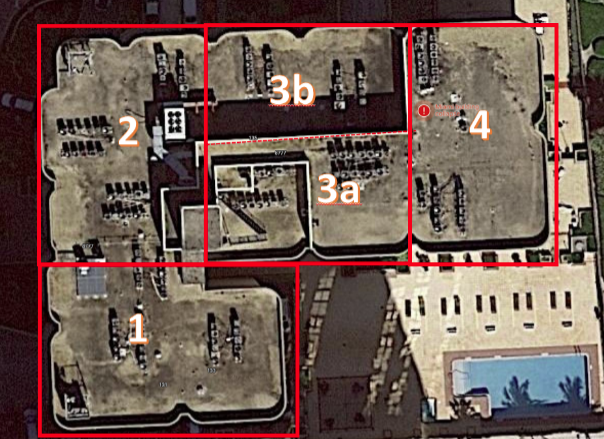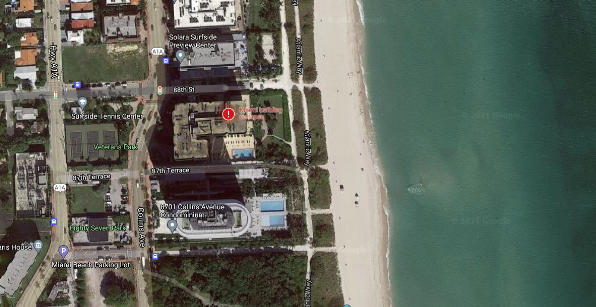

‘it’s been more than one week after the condo disintegrated into a heap of slab and tangled metal, only 24 bodies have been recovered.
By now, most people who are aware of current events have heard of the tragedy in Surfside, Florida, where there was a sudden partial collapse of a 12-story building. “Partial” is a misleading term, as two of the four sections comprising the structure completely collapsed. The time of the collapse was early morning and so was likely to be fully occupied. Roughly half of the building’s 130 units were affected. The full extent of injuries and fatalities will not be known for some time. Before and after images showing the region of collapse is available at https://www.usatoday.com/in-depth/graphics/2021/06/24/florida-beach-con…
The immediate reports concentrated on the tragedy itself. The possible number of occupants, known and projected injuries, known and projected fatalities, search and rescue efforts, and similar. However, it took only a few hours for reports to begin including conjectures, both implied and overt, with regard to the possible cause. Early news reports referenced work on the roof including “heavy equipment” and “nearby construction”. The Florida International University quickly located an article 1, published in April 2020, suggesting land subsidence as a possible cause. It should come as no surprise that the article had been published by an FIU professor.
Within a short time, a video of the collapse taken by a nearby surveillance camera obtained by WSVN was being spread across the internet. “Watch the moment the Surfside building collapsed” – Fox News. “Video shows moment building collapses in Florida” – CNN “Surveillance video shows condo collapse in Surfside, 1 dead” – CBS12
News agencies started scouring for “experts” to voice their opinions on the cause of the collapse. Before 24 hours had passed and search and rescue teams were still just beginning to comb through the wreckage for both survivors and deceased, Fox Business trumpeted “Miami building collapse: Possible causes explained by area expert”. CNN also found their experts as did many others. The majority of the opinions expressed were those based on suppositions, not actual knowledge.
Social media was filled with armchair specialists, much like armchair referees, voicing their firm
opinions as to what caused the disaster. Based on the images available, the building can be divided into four segments, making an L-shape, per the image below. One leg of the L includes the western, inland portions, 1 and 2. The
other two portions form the other leg which extends eastward towards the ocean. Portion 3 is divided into two pieces, 3a, and 3b, as there appears to be an expansion joint between these, which was also reflected in the collapse.
1 https://www.sciencedirect.com/science/article/abs/pii/S0964569119309470…
The video from the surveillance camera is very disturbing to watch knowing that this was an
occupied building. In very little time after the surveillance video surfaced, a number of slow-motion images were created.
One of these can be viewed at https://www.youtube.com/watch?v=5JLehmdZVF8. Based on this video, the collapse appears to occur in three segments. The first shows a collapse of the middle structure, 3a, starting as a shed type collapse, which quickly spreads to a pancake collapse of 3b. [Note: A shed collapse is one where the floor slabs remain partially supported along one edge and collapse down on the opposite edge, giving the appearance of a lean-to shed. A pancake collapse is where one level collapses onto the lower level and may involve multiple floors. The Twin Towers suffered a pancake collapse on 9/11. The Atlantic City collapse of the Tropicana garage was a shed-type pancake collapse.
An image can be seen at https://pressofatlanticcity.com/gallery/news/look-back-at-the-tropicana…-
collapse/collection_91edf3d2-40d5-11e3-8378-001a4bcf887a.html.] After a brief pause, this was followed shortly thereafter by a complete pancake collapse of the southern building segment, 4. The collapse of the central segment 3a appears to commence some levels below the top and quickly consumes the entire height of the building but this could easily just be an error of interpretation of the video on my part. The portions of the building still standing are
the northeastern and northwestern segments, 1 and 2. What are some of the possible reasons for the collapse? The following represents my personal opinion as to the possible causes.
1. Long-term deterioration of the building foundation. The building is positioned along the beach at Surfside (see the google image below). Given its location, the saltwater environment will be present beneath the building and the level of that corrosive environment will fluctuate with the tides. This will provide ample oxygen should there
be any tendency for corrosion (for reinforced concrete) or rot (for timber piles) to take place. However, the actual construction is not yet known.
2. There was work being done at roof level. It is, therefore, possible that materials were stored, or equipment was present, which overloaded the roof. This would explain the appearance of a shed collapse. The time of the collapse was shortly before 2 a.m. and there was, therefore, no work underway. However, the actual work which was being done, including location, means, and methods, is not yet known.
3. The building to the south of the collapsed structure was completed in 2019. Construction of any building will include some degree of disturbance to the surrounding ground. Depending upon the design of the building and the method of construction, this disturbance can be either minimal or substantial. It is possible that construction disturbed the soil beneath the collapsed structure. However, the details of the building, including design, and construction means and methods, are not yet known.
4. There is another ongoing construction in the area, most notably to the northwest of the collapsed building. There is therefore also the possibility of soil disturbance and a similar lack of information to offer any conclusion, however preliminary. 5. Based upon images available on the internet, the inland, west side of building portions
1 and 2, and the majority of the southern portions of sections 3a and 4, were supported at the base by concrete columns which elevated the structure above ground level. See the image below, also taken from Google Street View. It is likely that this was done both to provide protection against flooding and parking space. It is also possible that the building was not a redundant structure, meaning that failure of one key component could result in a disproportionate collapse (also known as progressive collapse). Hence, under this assumption, if one column was removed then a substantial collapse of the
structure above might occur. However, details of the building’s design are not yet known, nor is there any possibility of obtaining evidence of a method by which a column could be sufficiently damaging to result in collapse (such as car impact) until search and rescue operations are completed and the debris carefully removed for examination.
6. The geology of the area consists of porous limestone. This is the material on which the building is supported. It is possible that long-term erosion weakened the soil until it could no longer support the building. This follows the suggestion in the FIU paper referenced earlier. However, that would not explain why almost half of the building did not collapse.
7. Remodeling of one of the condominiums. It is, unfortunately, not uncommon for structurally significant building elements to be cut or even removed unwittingly by an occupant in an attempt to “improve” or enlarge a space. As with the other conjectures, there is insufficient information to offer this as an actual explanation.
8. Terrorism. This is always a possibility, however unlikely. While the above may be suggestions as to possible causes for the initial collapse, they do not, however, offer much explanation for the second collapse. Again, it is possible that the
the second collapse was due to similar causes but was initiated by the ground shaking resulting
from the initial failure.
There are likely other possible reasons for the collapse which may be explored as information is gathered, design details procured, soil investigations made, etc. The primary argument is that, at this time, any explanation proffered to satisfy the public’s desire for an explanation is simply conjecture.
Most failures, whether total collapses such as this or smaller failures, such as water penetration, cracking, sagging, vibration, faulty electrical installations, failing HVAC, etc., are due to causes which, bluntly speaking, are not rocket science. Based on my experience, the usual causes are faulty construction, followed by a lack of adequate maintenance, followed by faulty design.
The least likely cause will be something that was not yet known. In this last category, one of the better-known examples is the collapse of the Tacoma Narrows Bridge, popularly known as Galloping Gertie, which spawned significant and ongoing research into wind effects on buildings. (Of the many videos available, although this gets rather technical I
suggest https://www.youtube.com/watch?v=KqqyAZDpV6c).
However, news articles are still filled with headlines proclaiming “Freak Accident” was the cause, and avoidance of the incident will have been widely known but ignored.
If the vast majority of failures could have been avoided with information that was readily available, why do failures, whether a total collapse or smaller events, still occur? Many will often cite the push for cheaper construction and cost-cutting, resulting in shortcuts in design and construction which lead to failure. However, my experience is that, while the
the vast majority of failures were easily avoidable and often did not even have any significant effect on profit (whether of the owner, designer, material supplier, or contractor), the most common feature of these – ranging from water damage to mass fatalities – is that those responsible did not believe anything would happen.
“We always do it that way” is the often-heard phrase given in the defense of a failure. The more scientific-minded might cite “Near Miss Theory”. This is epitomized in pathological gamblers. As stated in the summary of “How Near-Miss Events Amplify or Attenuate Riskily Decision Making”
2 Near misses are events that have some nontrivial expectation of ending in disaster but, by chance, do not. We demonstrate that when near-misses are interpreted as disasters that did not occur, people illegitimately underestimate the danger of subsequent hazardous situations and make riskier decisions (e.g., choosing not to engage in mitigation activities for the potential hazard).
In other words, if nothing bad happened before, why not just keeping doing it the same way? This, unfortunately, seems to be the history of how society has progressed. Until there is a significant, widespread, failure or disaster, there will be a parallel failure to take action to prevent its occurrence. Hence, for example, people live on cliff faces, in flood zones,
within along eroding oceanfronts, within forests with high fire risk, and at the base of mountains in active seismic regions. And buildings are constructed along zones subject to the hurricane, storm surge, and eroding soils.
With specific regard to buildings, this also includes not undertaking regular inspections and then following through with maintenance, taking design shortcuts that result in inappropriate designs and specifications, using substandard materials which have not yet been shown to be inadequate for their intended use and, perhaps most significantly, ignoring knowledge of potential disasters and what can be done to mitigate their consequences.
By: James Cohen, PE
James Cohen Consulting
JCohen@JCConsultingEngineers.com
